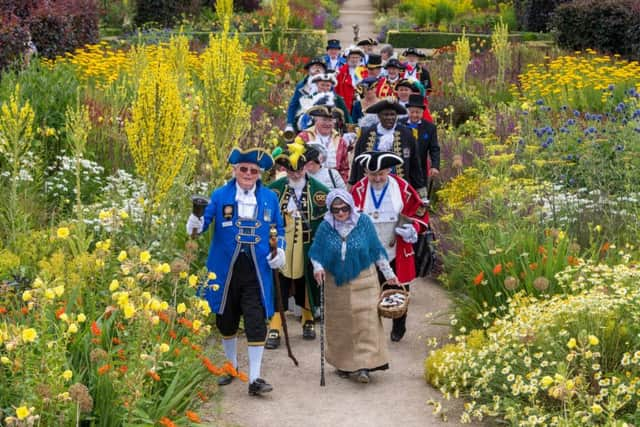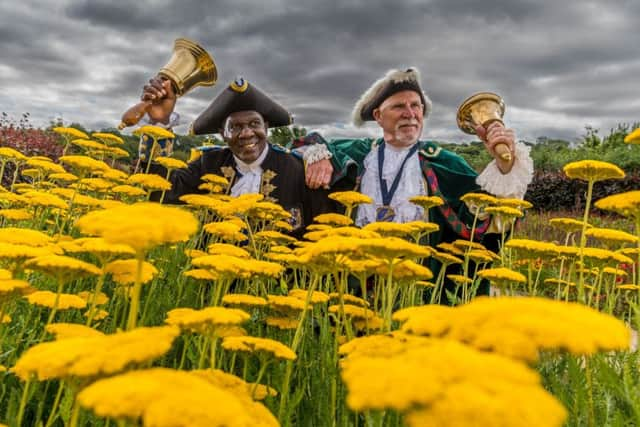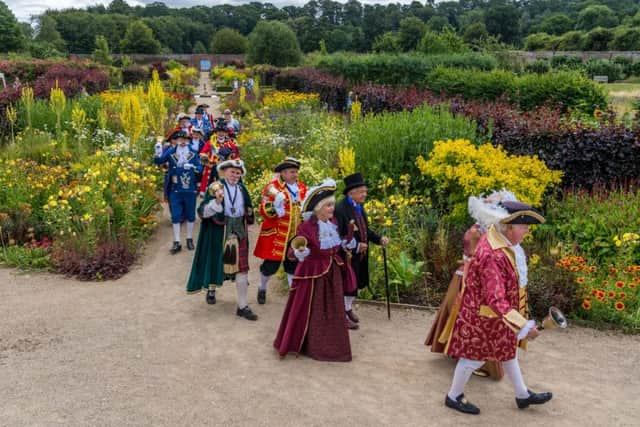Traditions of the world's top town criers celebrated in Helmsley competition
These criers, once the deliverers of the nation’s news, were among the most important men in 11th century England, bringing announcements of births, legislation and tax rises.
This weekend, as the world’s most revered remaining criers competed in Helmsley’s first ever competition, their booming calls of “oyez, oyez” rang out once again in the region.
Advertisement
Hide AdAdvertisement
Hide AdAnd, following two rounds before a waiting crowd, a champion was crowned, 6ft 7inches-tall Ed Christopher who had travelled all the way from Hamilton in Bermuda.


“What a fantastic spectacle,” said David Hinde, Helmsley’s crier who hosted the competition at the town’s walled gardens and castle with the Helmsley in Business group.
“We had a whale of a time. The criers were bouncing with joy - and it was like that for everybody there who came to watch.
“There are an awful lot of people who have now learned an awful lot about what town crying is all about, and why it should be celebrated.”
Advertisement
Hide AdAdvertisement
Hide AdThe criers competition drew entrants from around the world for the Magna Carta Trophy, as well as local ones from Scarborough, Filey, Knaresborough, Malton and Norton, and was judged according to the rules of The Ancient and Honourable Guild of Town Criers.


It had been a close call between the Bermudian winner and his counterpart from Nova Scotia, said Mr Hinde, but Mr Christopher had delivered his cry with a “swagger and a walk and a wink” that was unrivalled.
“It’s not just about loudness - it’s about volume, and diction, selection and clarity,” he said. “It’s no good hearing what’s being said if you can’t understand it.”
The tradition of town criers, introduced by William the Conqueror, had first been brought to England as a way of sharing the country’s news with people who couldn’t read or write.
Advertisement
Hide AdAdvertisement
Hide Ad“It would traditionally have been a man with a very loud voice,” said Mr Hinde who himself holds the world record for the loudest voice at 114.8 decibels - the volume of a rock concert.


“The crier would read out the parchments, and when he was finished would nail it to the door of the pub or a church, as that was where most people would see it.
“These would be messages of raised taxes, of marriages and births, and while sometimes the news was good, it could also be bad.”
The phrase ‘don’t shoot the messenger’ came from this, he said, as the criers were the crown’s men and it was treason to harm them, no matter the news they were delivering.
Advertisement
Hide AdAdvertisement
Hide Ad“They were involved in executions,” he added. “In ensuring curfews were adhered to, but also in ale tasting, to ensure it was good enough to drink.
“Over time, the criers became employed by town and city councils, and were more involved in events and festivals.
“Now, we greet people, when they come to the town, or at festive events.
“But competitions like this helped create a great spectacle. The day went superbly, it was marvellous.”